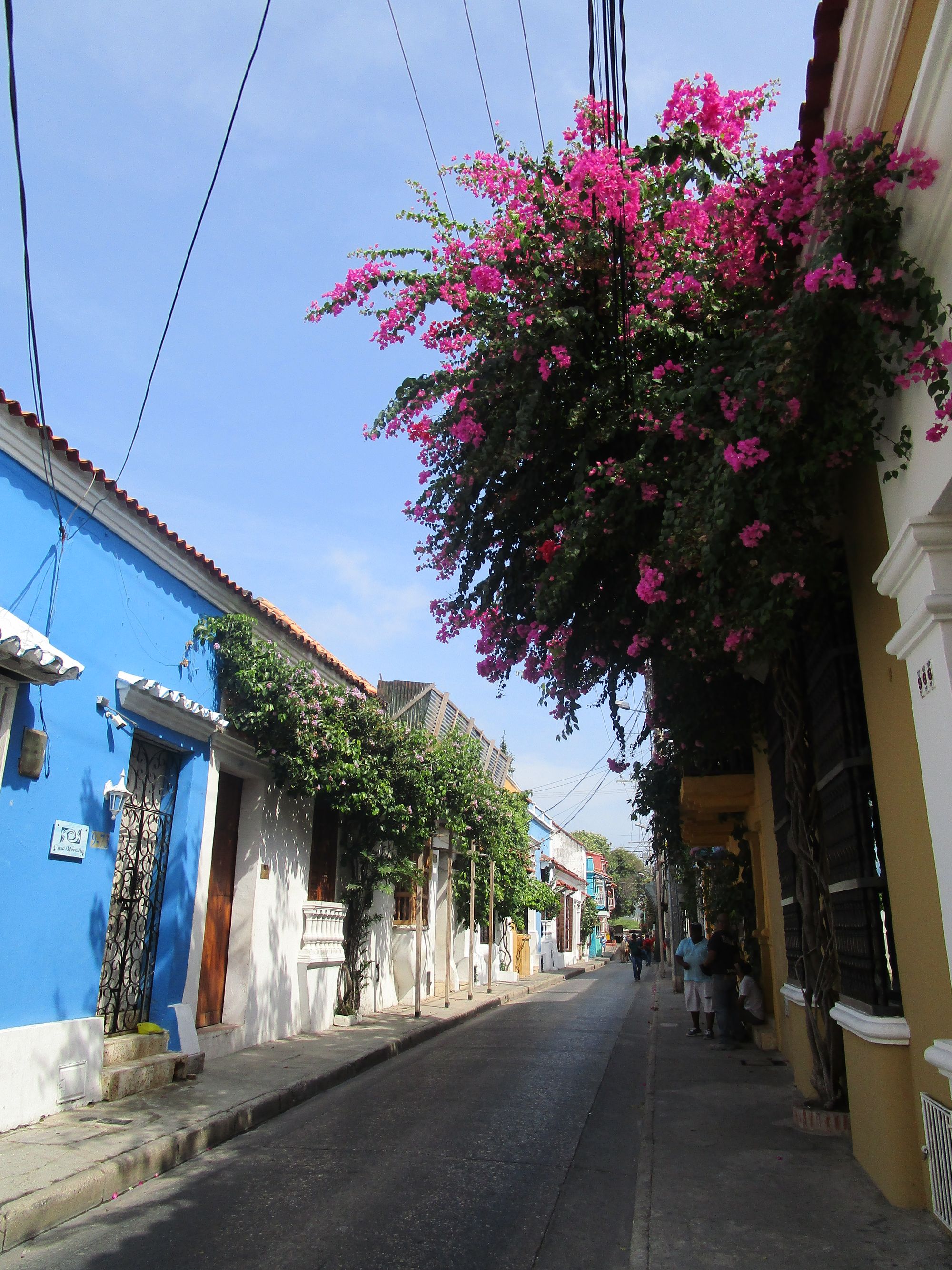Cartagena de Indias: Journey's end

I'm sitting here in London writing this at the end of January. The temperature outside has dropped below freezing, it's dark, and the city is bracing for the first significant snowfall this winter.
It's a month since we got back from South America, and our trip already seems like a distant dream. Grey and gloomy London couldn't be more different from the vivid colours and tropical heat of Cartagena, our final stop in Colombia.

Cartagena de Indias, to give the city its full name, is situated on the Caribbean coast, and the humidity hit us the moment we stepped off the plane. It's the fifth biggest city in Colombia, home to around a million people, though most visitors don't stray far from the Ciudad Amurallada, the old walled city founded by the Spanish in 1533. Cartagena is a popular port of call for cruise ships during the winter months, and it was far and away the most touristy place we went in Colombia. Each day we ran a gauntlet of street sellers hawking Panama hats, Cuban cigars and cheap jewellery; after dark, the same people sometimes offered us cocaína in a conspiratorial whisper.

We were staying in the heart of the walled town, just round the corner from busy Plaza San Francisco, where a plump Botero nude reclined provocatively in front of a 16th century convent. After four months on the road, packing our days full of museums, galleries, hiking trails and walking tours, it was nice to spend our last few days in South America just taking it easy. Each morning we went for a wander around the photogenic streets, then spent the afternoon lounging by the pool at our hotel, before heading out again after dark for dinner and drinks.

Cartagena was a key port during the colonial period, growing rich as the Spanish shipped looted indigenous treasures back to Europe. At the same time, over a million African slaves passed through Cartagena on their way to the gold mines, sugar plantations and haciendas of the interior. The city and the surrounding Caribbean coast are still home to a large black population, so I was surprised that there didn't seem to be any museums grappling with Cartagena's slave-trading past. The only obvious manifestation of Afro-Colombian culture in the old city was the traditional palenquera costumes, worn by the women who pose for photos with tourists in return for a few pesos.

Cartagena's reputation for riches meant that the port was frequently plundered by pirates such as Sir Francis Drake, and the city was also the target of a failed English invasion in the 18th century. The Spaniards responded by beefing up the city's defences, erecting the walls that still surround the old town and building the huge Castillo de San Felipe de Barajas, the biggest fortress in the Spanish Americas.

This fortress is located just to the east of the walled city, a short but swelteringly hot walk along a busy main road. We seem to have a habit of always ending up outdoors during the hottest part of the day when we're on holiday, and so it was as we ascended the ramparts under the relentless Caribbean sun.

We found some respite from the heat as we explored the maze of narrow tunnels that burrow through the bowels of the building, connecting up the different bastions and batteries that defended the fortress from attack. From the top we had a fantastic view of both the old town and the massed skyscrapers of the new city, where the majority of modern Cartagena's population lives.

In between the fortress and the walled town lies Getsemaní, a once dangerous barrio that has rapidly gentrified thanks to an influx of backpackers and local hipsters. Getsemaní is every bit as colourful as the more polished tourist streets inside the walls, but the neighbourhood has a more lived-in feel. Formerly neglected colonial-era buildings have been scrubbed up and repainted, though there are still pockets of poverty around the edges. It was an interesting area to wander around, and we found a nice lunch spot near Plaza Trinidad, a leafy little square where locals sat outside a pretty 17th century church and watched the world go by.

On our last night in Cartagena we were sat at a bar next to the city walls, drinking piña coladas and reminiscing about the last four months. We'd travelled through arid deserts and sweltering jungles; we'd hiked up misty mountains and along pristine beaches; we'd explored sprawling megacities and uninhabited islands. We'd crammed in an awful lot, visiting eight countries and six capital cities, across four different time zones; we'd crossed the Equator four times; and we'd slept in at least 40 different beds.

In some ways it seemed like we'd been away forever. We were looking forward to seeing our family and friends, to celebrating Christmas back in the UK, and to the prospect of no longer living out of a backpack. But we also couldn't help gazing out across the Caribbean Sea, towards Panama to the west, and willing our adventure to carry on just a little bit longer.

